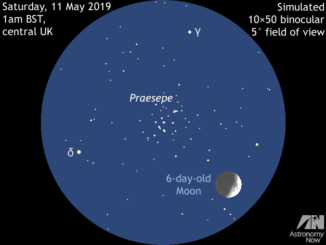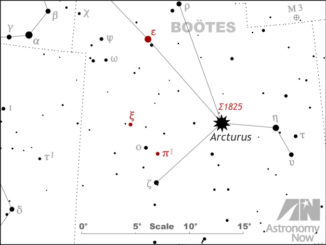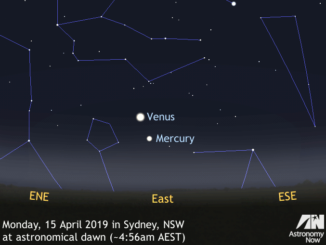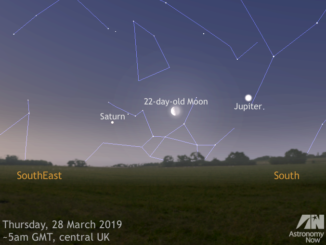
See the Moon buzz the Beehive Cluster on 10-11 May
UK skywatchers with a view low to the west between midnight and moonset on Saturday, 11 May 2019 can see the 6-day-old waxing crescent Moon close to Messier 44, otherwise known as Praesepe, or the Beehive Cluster. Later, observers on North America’s Eastern Seaboard can see the Moon pass in front of this glorious open cluster just before local midnight on 10 May.









